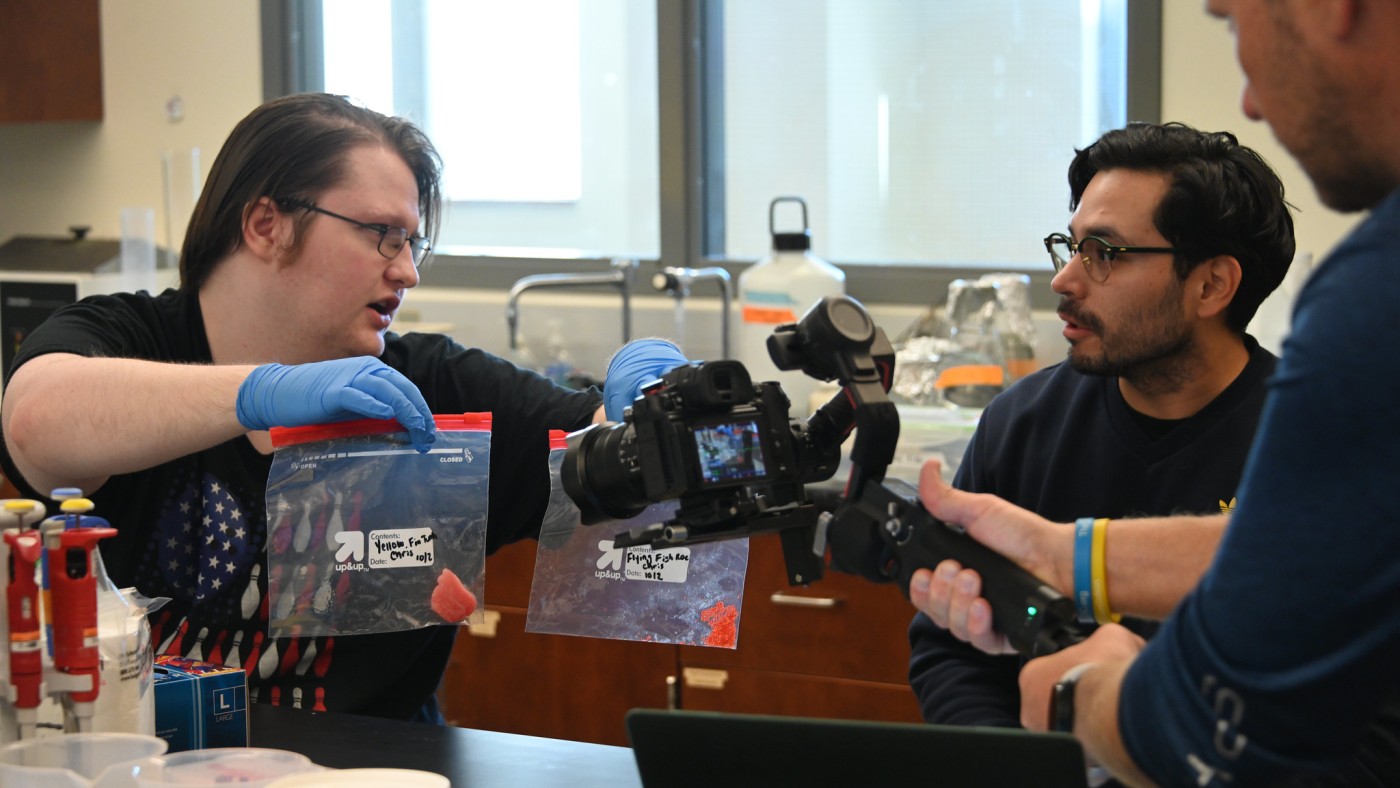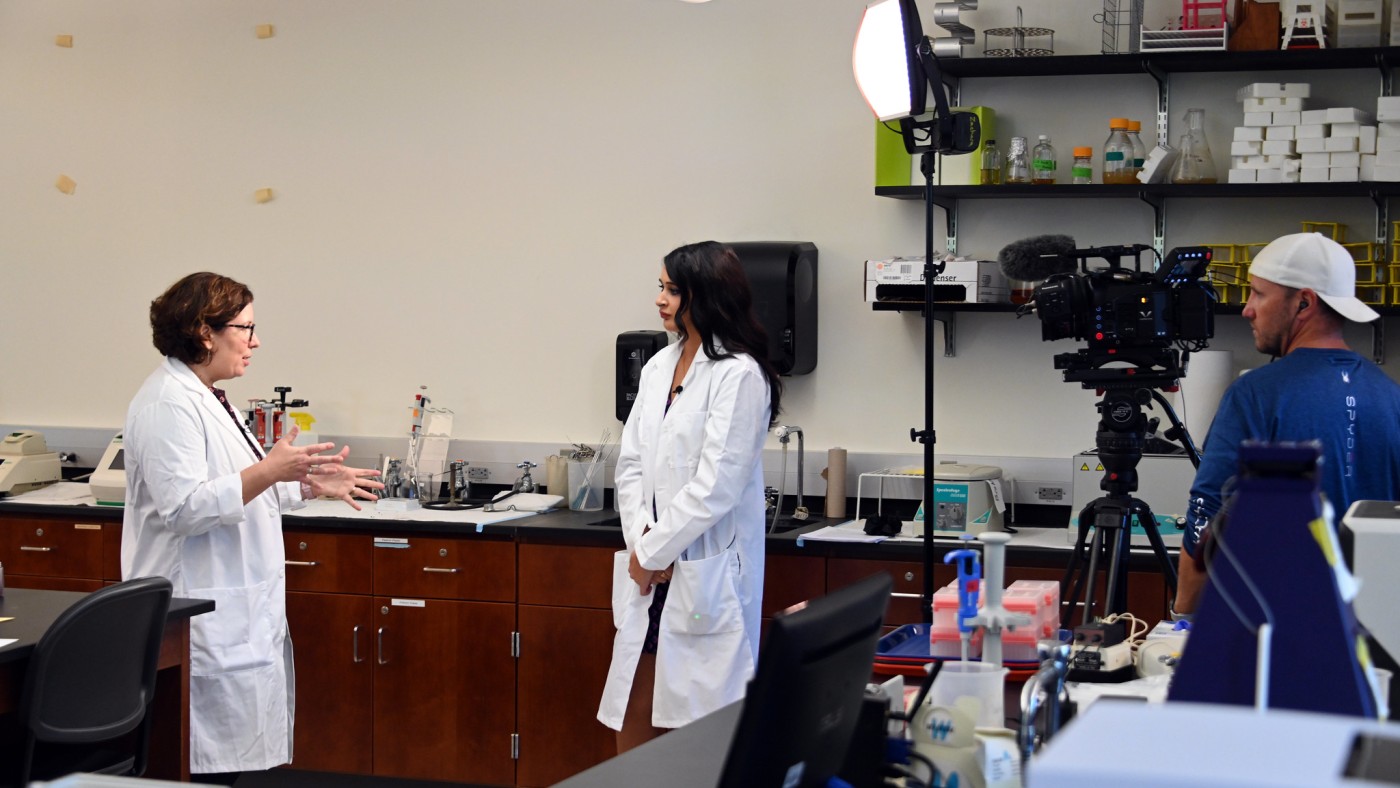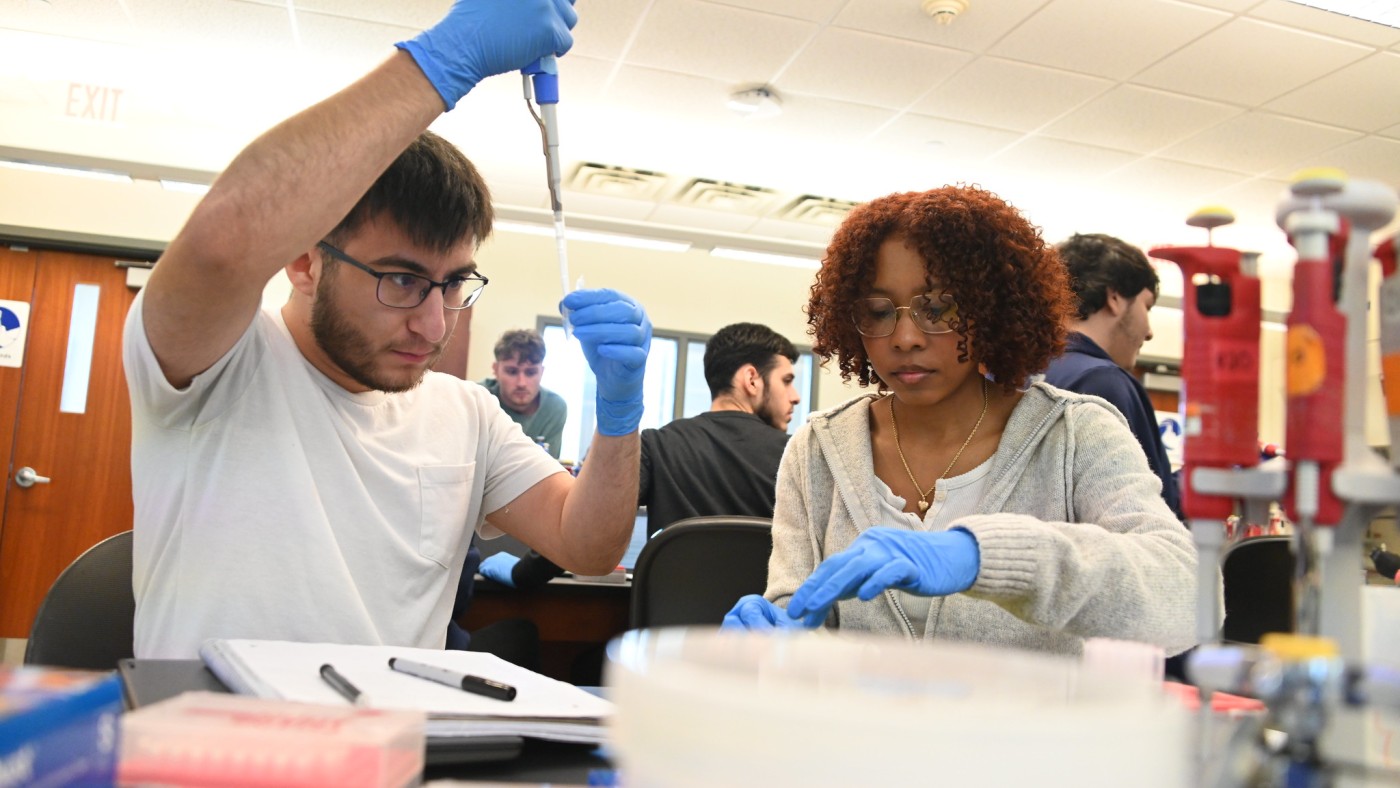Fishy Findings: TV News Investigation Unit Reports on Fish DNA Testing By DU Biology Students

Sometimes, what you eat may not be what you think it is.
A study of fish DNA, conducted annually by Dominican University biology students, received new attention this year when a local news crew dropped by campus to document the process and, later, the results.
NBC 5 Chicago’s consumer investigation unit reported in November on the molecular and cellular biology course taught by Dr. Irina Calin-Jageman, in which students followed an intricate process of isolating mitochondrial DNA from uncooked pieces of fish. The extracted DNA samples were then sent to a suburban lab for sequencing.
Following this, the students were able to compare the results to genomic databases and determine the actual species of their fish.
Was the sample really what the restaurant menu or grocery store label indicated? Sometimes it wasn’t— especially when red snapper was on the menu.
In total, 24 of the 84 fish samples tested by students were mislabeled for consumers. Of that 24, all but three were sold at restaurants. Ten samples of fish from multiple sushi restaurants labeled as red snapper were actually tilapia, a less expensive fish, the findings showed. Additionally, seven white and “super white” tuna samples, also from restaurants turned out to be escolar, an oily fish that can cause gastrointestinal illness in some people who consume it.
Two of three samples of shiro maguro, the Japanese term for albacore tuna, were also escolar. Other mislabeled fish included sea bass that turned out to be Patagonian toothfish, an albacore sample that was amberjack and a red snapper from a grocery store that was a different species of snapper.
NBC 5 shared some of these findings in a Nov. 26 report, suggesting that consumers are more likely to get the correct product when buying whole fish, particularly red snapper, from grocery stores.

The classroom results are in line with what previous classes have uncovered, according to Calin-Jageman. The research was inspired by a 2013 study by Oceana, an ocean preservation organization, and the work performed by students follows the same protocols as FDA labs, Calin- Jageman noted.
“The good news is, we can trust a lot of labeling. We found a lot of samples that were accurately labeled,” she said. “But there are some big exceptions.”
Considering the frequent mislabeling of red snapper that has been documented, student Ethan Velasquez admitted he was surprised, but happy, that tests showed his snapper was authentic, because he had purchased it from a grocery store he trusts.
Other students expressed concerns about the mislabeling of fish as the results were presented.
“I didn’t think as many fish samples would be mislabeled because I tend to think that what I’m buying is what I’m getting,” said senior Lesya Davis.
“It kind of makes you doubt whether the restaurants you love are the ones you can trust,” added senior Elizabeth Sobczak, noting the mislabeling among sushi restaurant samples.
Senior Ryan Barnett questioned if the findings are indicative of a larger problem.
“It’s a little bit frightening. What else are we consuming that isn’t what we think it is?” he asked.
At the same time, he acknowledged that it “was nice to see there are types of fish that are what they say they are, like cod, swordfish or catfish.”
The process of isolating the DNA for testing also piqued the students’ interests.
“Everything we did is similar to what is done in crime scene testing,” said senior Nadia Gonzalez. “It’s cool to see how a forensic scientist can isolate DNA.”
Barnett, a neuroscience major who also performed DNA extraction during a summer research internship at the University of Minnesota, noted that students are learning skills they will use professionally.

“This was a really good preview of what a career in STEM research looks like for current students,” he said. “This is really what you’re going to do once you graduate.”
Is the mislabeling of fish intentional? Calin-Jageman is hesitant to draw this conclusion, citing the many complexities of the fishing industry and the unknowns of where the initial mislabeling of the fish occurred.
However, she notes, “you become a little suspicious when you see that every sample from a restaurant labeled as ‘red snapper’ is not really red snapper,” but actually a less expensive fish species.